Muddy Water Redfish
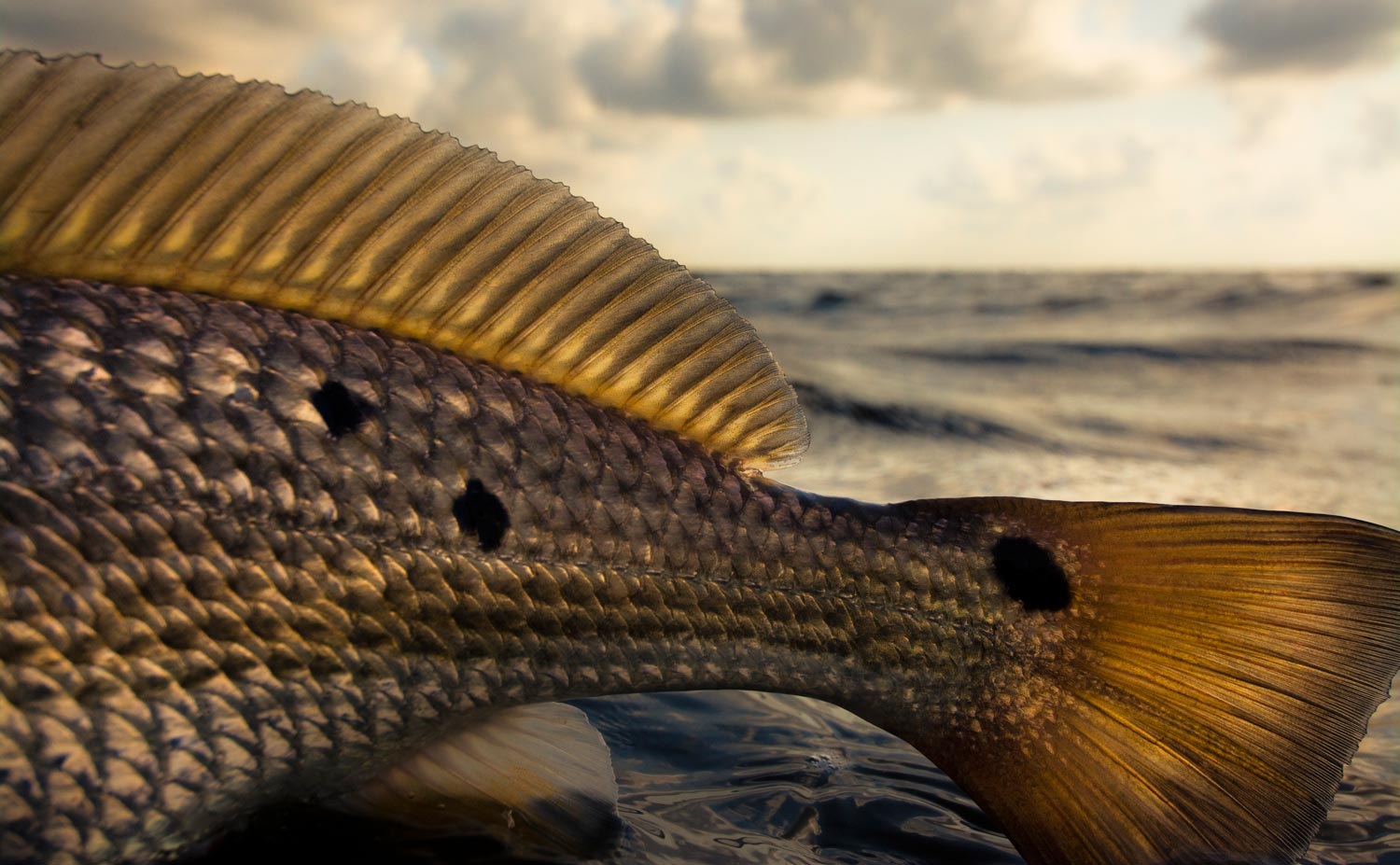
BY OWEN PLAIR
WATER CLARITY IS THE MOST IMPORTANT THING IN SALTWATER FLY FISHING.
No matter what fish you are targeting, simply being able to see the fish, and the fish being able to see your fly is key. Targeting fish on the flats in muddy water is a challenge, but there are ways to get past the dark side my friends!
Many things can cause water to be muddy. Wind, rain, current, temperature, big schools of fish moving, and tides, especially when it comes to shallow water redfish flats. Targeting redfish, on mudflats with poor clarity, can still be productive. The fish are still feeding, they’re shallow enough for you to see them push, and it’s easy to get close enough for a simple cast.
Seeing the fish in muddy water is the first step to having a productive day. You’re not looking for the bodies of the fish but the push of water caused by fish moving or chasing bait. These pushes are shaped like a U and give away the direction the fish is moving, which will help you make the right presentation. You can also look for tails, backs, and other visual signs of redfish without having to see their whole bodies.
The most important thing, when targeting redfish in muddy water
Read More »Fly Tying Material: DMC Embroidery Floss for Midge Patterns
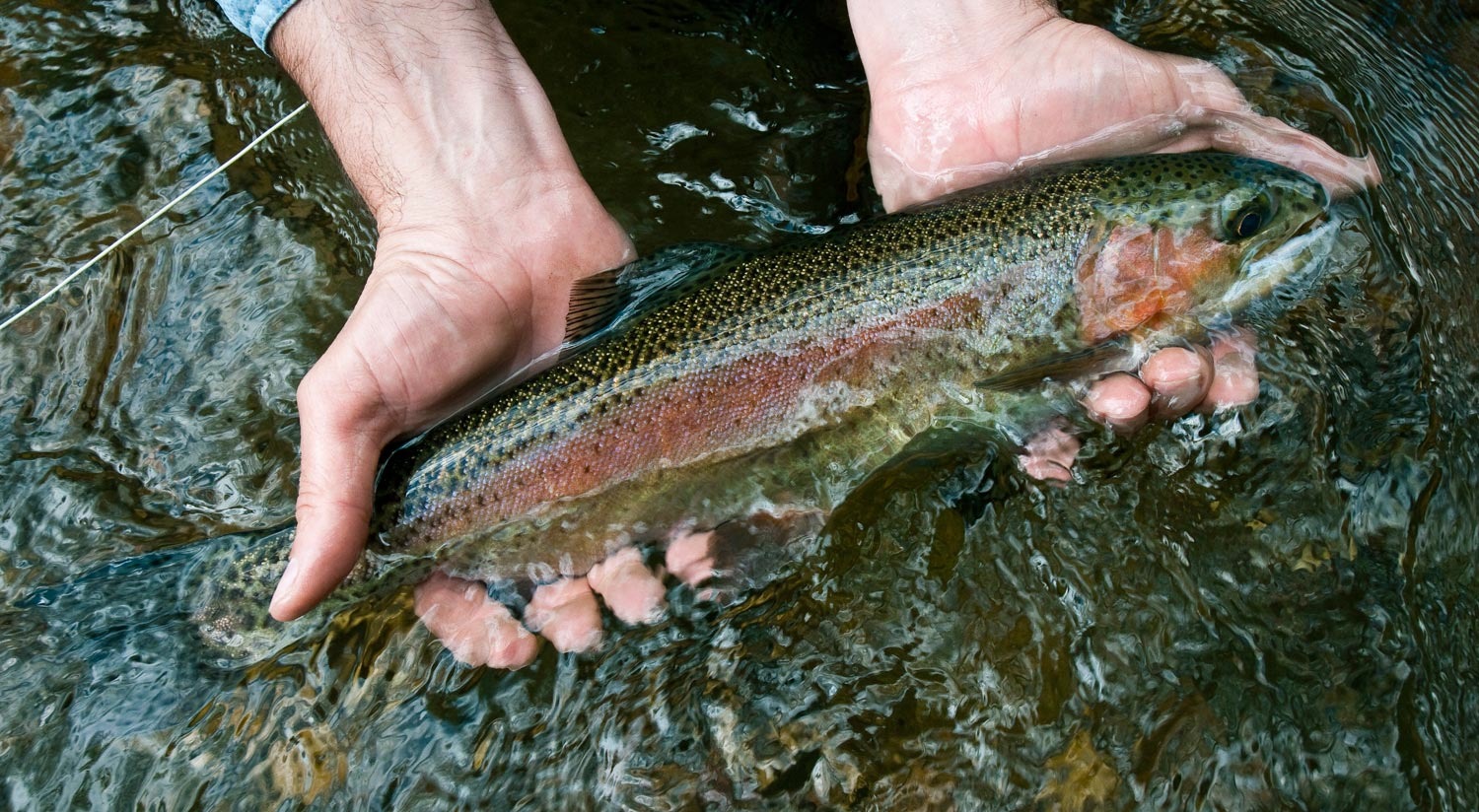
As we work through fall, and move our way into the winter months, midges will start making up a higher percentage of a trout’s daily diet. Midges may lack the high caloric value of their larger aquatic friends, but they more than make up for it with their year-round availability, and high densities on the water. Veteran trout bums understand the important role that midges play, especially as a mainstay food source for late fall and winter trout. Tiny midges don’t pack a lot of weight on trout, but they do supplement trout enough to help slow up winter weight loss, until the smorgasbord of food returns in the spring. If you went around and snuck a peak in as many hardcore winter trout bums fly boxes as you could find, most, if not all, would be stocked with a nice variety of midge patterns that imitate the three life stages of the aquatic midge (larva, pupa and adult).
The past month I’ve been bulking up my inventory of midge patterns. That way, I’ll be ready when the trout start consistently keying in on the tiny stuff. If you know your way around a vise, I suggest you take the time to do so as well. Most midge recipes are quick and easy to tie, and I promise, the time and energy you spend tying them up, will be paid back ten fold on the water. One of my favorite fly tying materials that you can find in your local craft store or Walmart for tying midge patterns is DMC (Six-strand) Embroidery Floss. All I can tell you is I flat out love this stuff.
Read More »Fishing With Your Kids
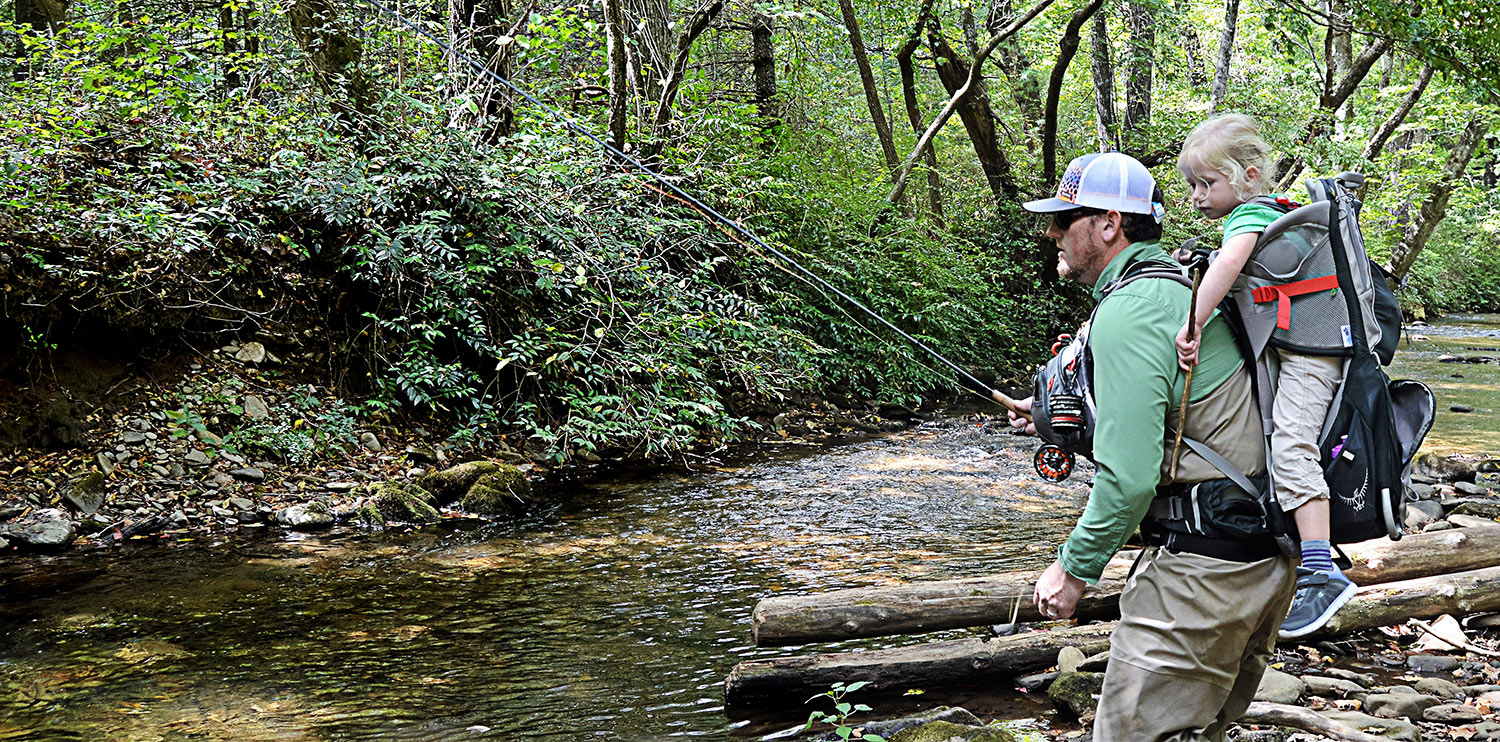
By Justin Pickett
If you’re like me, and planning to hit the water with your kid, here’s a few things to take into consideration before strapping them in the car seat.
Hot and sticky days are beginning to give way to the hints of fall that are felt amongst the fog laden mornings and it gets me all worked up. Fall has got to be my favorite time of year here in the Southeast. Leaves are beginning to change color, water temps are dropping, and the fall spawners will be on the move in the coming weeks. But there’s one other thing that gets me excited about fall, and that’s getting my little girl back out on my local rivers and streams with me. Georgia summers are hot and heavy, so many of my fishing outings with my little one are limited to very short, bank hopping sessions in the evening. Far from the fishing I enjoy the most, especially with my little fishing buddy. For me, the upcoming days will no doubt have me preparing for long, streamside days with my kiddo. If you’re like me, and planning to hit the water with your kid, here’s a few things to take into consideration before strapping them in the car seat and screeching out of the driveway!
Be Realistic: Before you go running out the door thinking that you’re going to have some crazy, epic day of fishing, let’s be realistic about the situation at hand. You’re not going to be doing near the amount of fishing as when you go with your buddies. Though it is very rewarding and some of the most fun a parent can have, it is going to be more work than you’re probably thinking. While your kid may be excited about going fishing with mommy, or daddy, or both, they’re still kids. They have short attention spans and limited physical abilities. When planning to fish with your kid(s), your destination needs to be greatly considered and chosen accordingly to fit your child. Climbing Barrier Falls in search of Appalachian Brook Trout with a toddler probably isn’t going to be the best idea. Keep safety in mind. Choose a creek, stream, or pond that is easy to navigate and doesn’t require a ton of hiking.
Food: Don’t get caught with your pants down! Make sure to take the time to pack away the essentials for a successful day in the outdoors with the little ones. Water, juices, snacks, and sandwiches should be no-brainers. You won’t last very long if you forget food and drinks for the kids. You also don’t
Read More »5 Reasons Why Turbulent Water Can Provide Great Trout Fishing
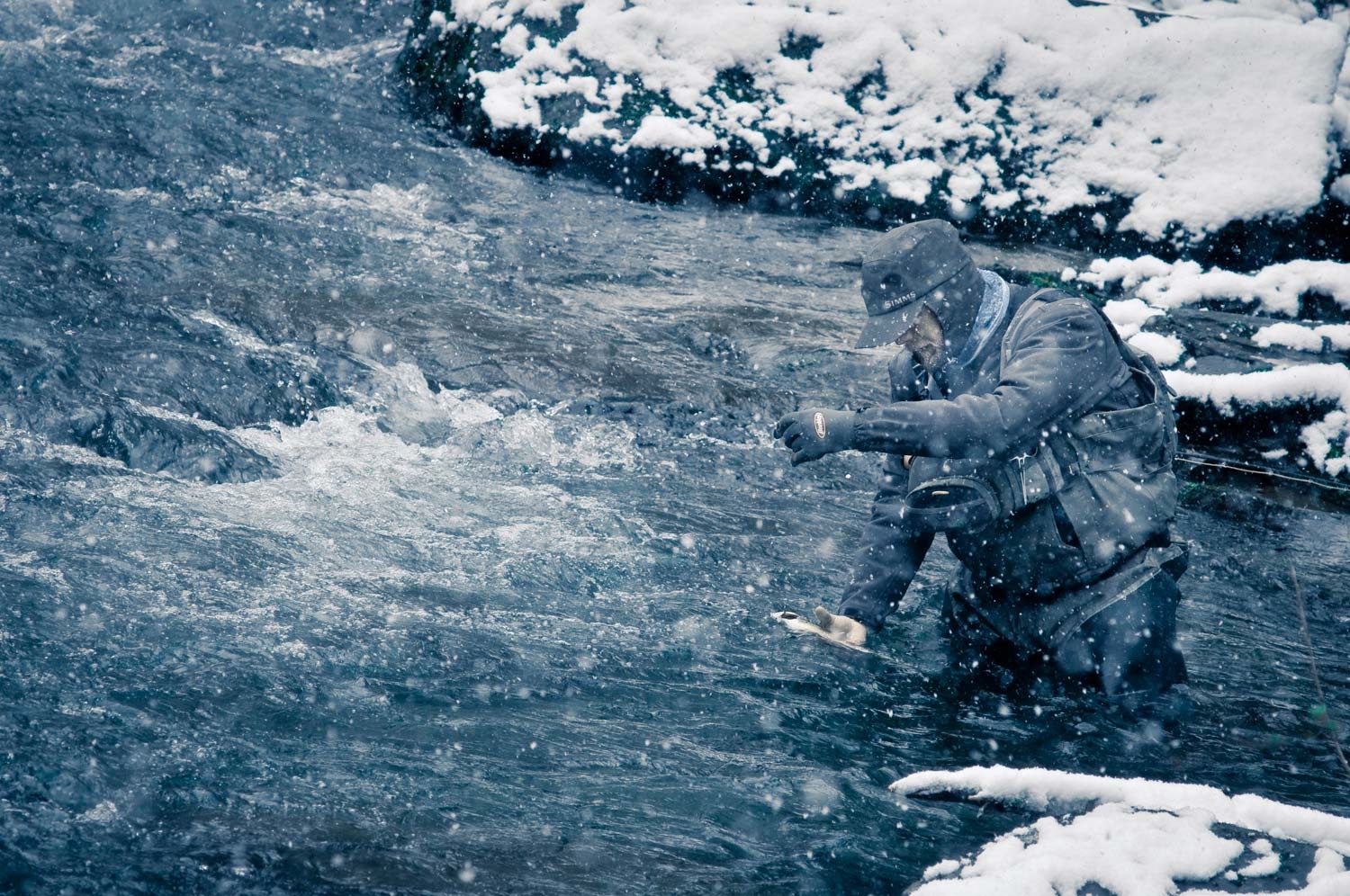
Many of my beginner level clients, struggle when it comes to reading trout water. More specifically, they find it difficult when they have to compare two different sections or types of water, and quickly decide which one of them should yield them a higher percentage for success. In turn, I get asked the question often, “What’s the type of water I like to target first, when I have the opportunity.” I usually respond with “If I have a choice, and I’m looking for consistent fishing locations year round, I prefer to target turbulent water (faster moving) over calm water (slow moving).” It’s the riffles, pocket water and main current seams that fly anglers will generally find the turbulent water, and that’s the kind of places that not only will provide everything a trout needs to survive, but furthermore, the trout will usually be less picky as well (easier to catch), since the water is moving more swiftly. Below are five reasons why fly anglers should search out and fly fish turbulent water when they’re fly fishing for trout.
Read More »Bug Juice Ain’t The Only Thing Missing!

THE EVERGLADES IS CERTAINLY KNOWN FOR ITS AMAZING FISHING, SCENERY, BIRD LIFE, AND THE MYRIAD OF OTHER ANIMAL LIFE THAT INHABITS THE ECOSYSTEM.
Unfortunately, the one thing that has everything else well outnumbered is the mosquitos. And not just any mosquito. These damn things have evolved into a dominant force that could easily be used as a form of biological warfare. Even urban legends exist of people dying from incessant attacks from mosquitos. I’m not even getting into the diseases that mosquitos can carry…. Don’t wanna get that zika!
With this in mind, I packed a few pairs of lightweight pants to wear along with my usual long-sleeved shirts and HooRags while out fishing in the creeks and bays “inside” the Glades. I wanted to prevent being eaten alive so that I wouldn’t be constantly scratching and smacking myself like a lunatic. I did completely forget to pack bug spray, but I knew I could pick some up a local grocery store. Besides, I think bug spray for these gnarly gnats and mosquitos only adds seasoning to our already tender meat…
Day one in the Glades came early. Rising well before the sun, Tim Harden, the Venturing Angler, and I met up with our guide, Capt. Jason Sullivan of Rising Tide Charters, at 4:15am. Waiting for Jason to finish fueling up the boat, we carried on a casual conversation. Jason stepped around from the gas pump and gave Tim an inquisitive look followed up with, “Did you bring pants? The mosquitos are awful. They’re probably the worst I’ve ever seen.”
I hadn’t paid it any attention in my morning stupor, but Tim had ventured out of the hotel room wearing a long-sleeved shirt and… a pair of lightweight shorts. Apparently, Tim had never experienced mosquitos bad enough in the years past that he had visited the Everglades. At least not enough for him to think of wearing pants
Read More »Posture Matters For Fly Casting
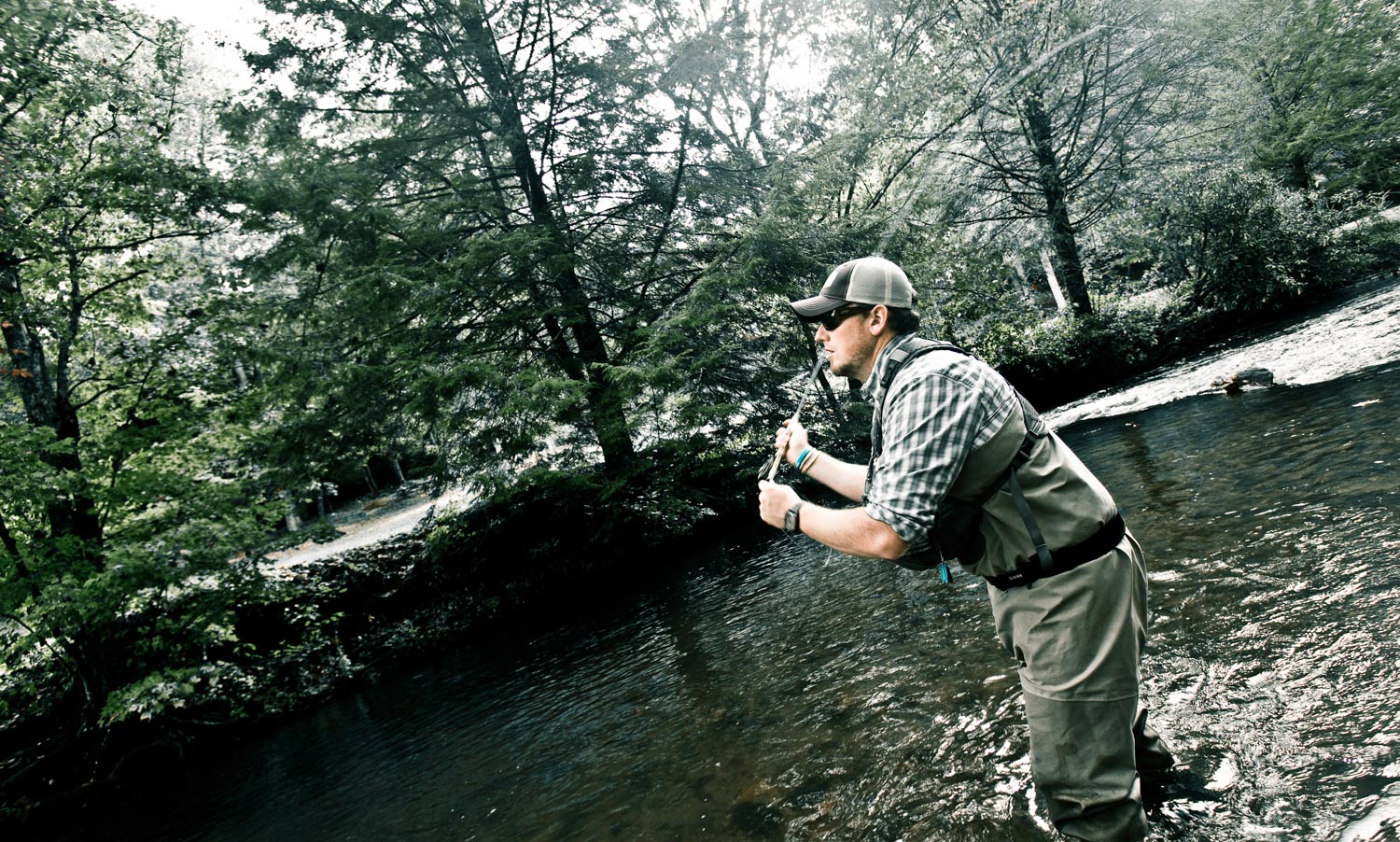
How many times did your mother tell you to stand up straight?
Well, I’m guessing she wasn’t a casting instructor. Almost every time I work with anglers on their casting, we end up talking about posture. I realize that fishing is a leisure activity, but fly fishing at least, is also an athletic activity and like anything athletic, posture matters. Better posture means better casting and that means catching more fish.
Here are a few basic tips for fly casting posture.
By far the most common problem I see in folks struggling with their casting starts with their knees. If you’ve ever stood up in a wedding, you’ve likely gotten the advice from the preacher about locking your knees. It’s apparently not uncommon for folks who lock their knees during a long ceremony to keel over like a drunk.
It makes sense; you have no real balance or control over your body when your knees are locked straight, but I can’t tell you how many folks I see trying to cast a fly rod stiff-legged. Even after I point it out, everyone is resistant to bending their knees when casting. I think they just feel silly, but would you feel silly bending your knees to hit a golf ball, or a baseball? What about throwing a pitch or shooting a basket? Would you take a shot at a big buck with your knees locked? Of course not. I can’t think of any sport you’d approach with you knees locked straight. Don’t try to cast that way either.
Bending your knees gives you solid balance and engages the powerful muscles in your core. This will give you better control of the rod and line, and add power to your cast. Having a firm stance is a huge help in making the all-important hard stop in the casting stroke.
This is never more important than when
Read More »Good Indications
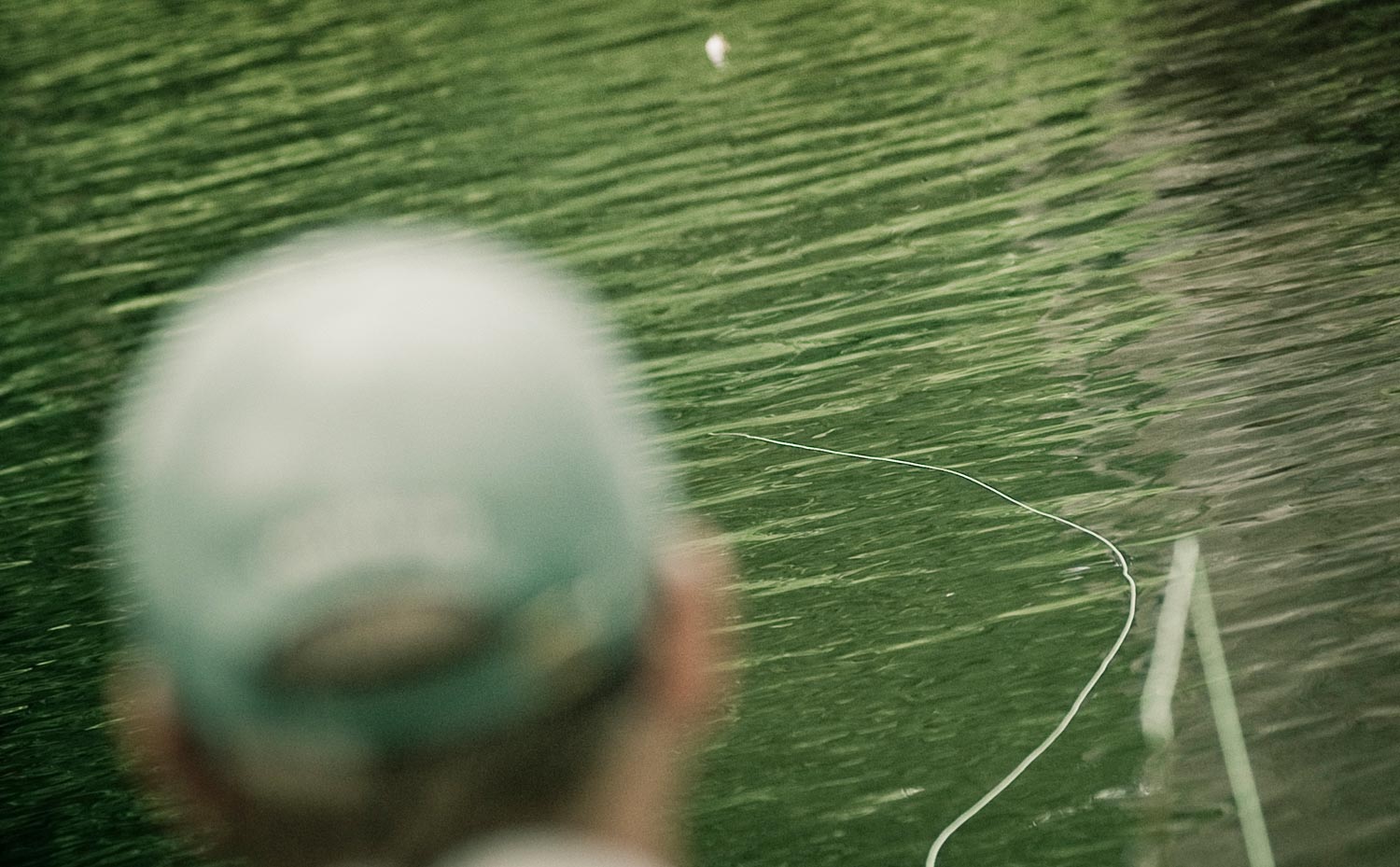
I VAGUELY REMEMBER THE DAYS BEFORE STRIKE INDICATORS.
I don’t know for sure when the first fly fisherman looked over at a bait fisherman using a bobber and decided that he couldn’t beat ‘um and it was time to join ‘um, but I do remember when I first discovered strike indicators. I was fishing nymphs with greater and greater regularity. I was catching a lot more fish but far from what I’d call proficient. A friend gave me a yarn indicator and promised I’d catch a lot more fish. He was right.
It wasn’t long before I found myself using the indicator every time I tied on a nymph. It worked so well I couldn’t see fishing without it. It was such a revolution that I figured there had to be something more. I went on a quest for the perfect strike indicator. That sublime doohickey that could put on my line that would make me a nymphing god.
I started with yarn and at first I wasn’t aware that there was anything else. I experimented with colors and sizes. Yellow, pink, chartreuse, white, black, each had its application but I never found anything I liked better than the yellow one my friend had given me. Fish liked it too. It got eaten routinely so I tied a hook into it. I caught a few fish but mostly I hooked my fingers while adjusting the indicator.
Next came foam. I tried emulating the yarn indicator with strips of foam bound together, thinking it would not get waterlogged like the yarn. It didn’t but it cast like an umbrella. Then I discovered stick-on foam indicators and they worked OK but they didn’t float very high. I eventually lost interest in foam and went back to yarn.
I tried a new style of yarn indicator with a tiny O-ring used to attach it to the line. It was an interesting idea. It was easier to attach but the O-ring always broke before long and it was tougher on the leader.
Then putty indicators came along. I couldn’t resist this idea. It was great to be able to choose the size of my indicator for the fishing conditions. To add or pinch off some putty to get just the right size. I even bought glow-in-the-dark putty which I am embarrassed to say I never used. Putty didn’t do it for me either and it left a sticky mess on my leaders and everything else it touched.
Next I went through a stealth phase.
Read More »It’s The Little Things
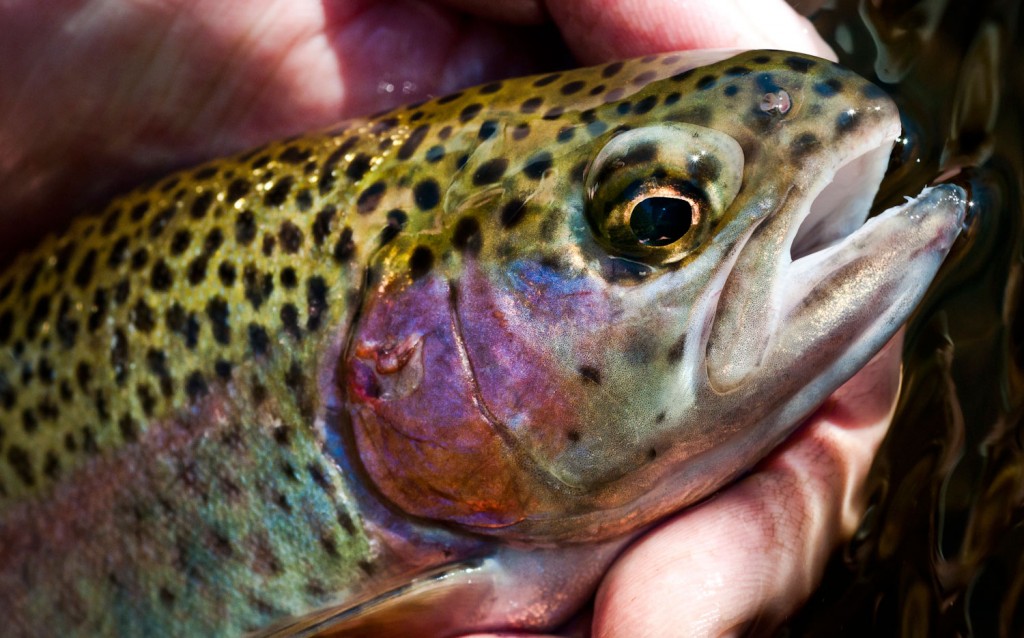
“I know it when I see it!”
Kent and I were doing a presentation at a fly shop the other day and after showing a couple of hundred fishing photos, during the Q&A part of the program, a fellow raised his hand and asked “do you guys catch any small fish?”
I guess I’m as guilty as anyone for perpetuating the idea that size is all that matters in fishing. I sure don’t feel like that’s true but when you look through my photos you, sort of, start to get that feeling. It’s easy to go too far the other direction too and get all moist and sloppy about tiny wild fish. I really do love tiny wild fish but that’s not all there is to me either. I just want to catch a great fish.
I guess I’ll define a great fish this way. When asked how he would define pornography Sen. Jessie Helms replied, “I know it when I see it!” I guess that goes for fish porn too.
The average size fish in the stream where this little guy was caught is around eighteen inches and I caught plenty of those fish the day this photo was taken, but this beautiful little guy that my buddy Dan landed is the one I’m going to show you. In my opinion he was
Read More »Never Give Up on a Bonefish
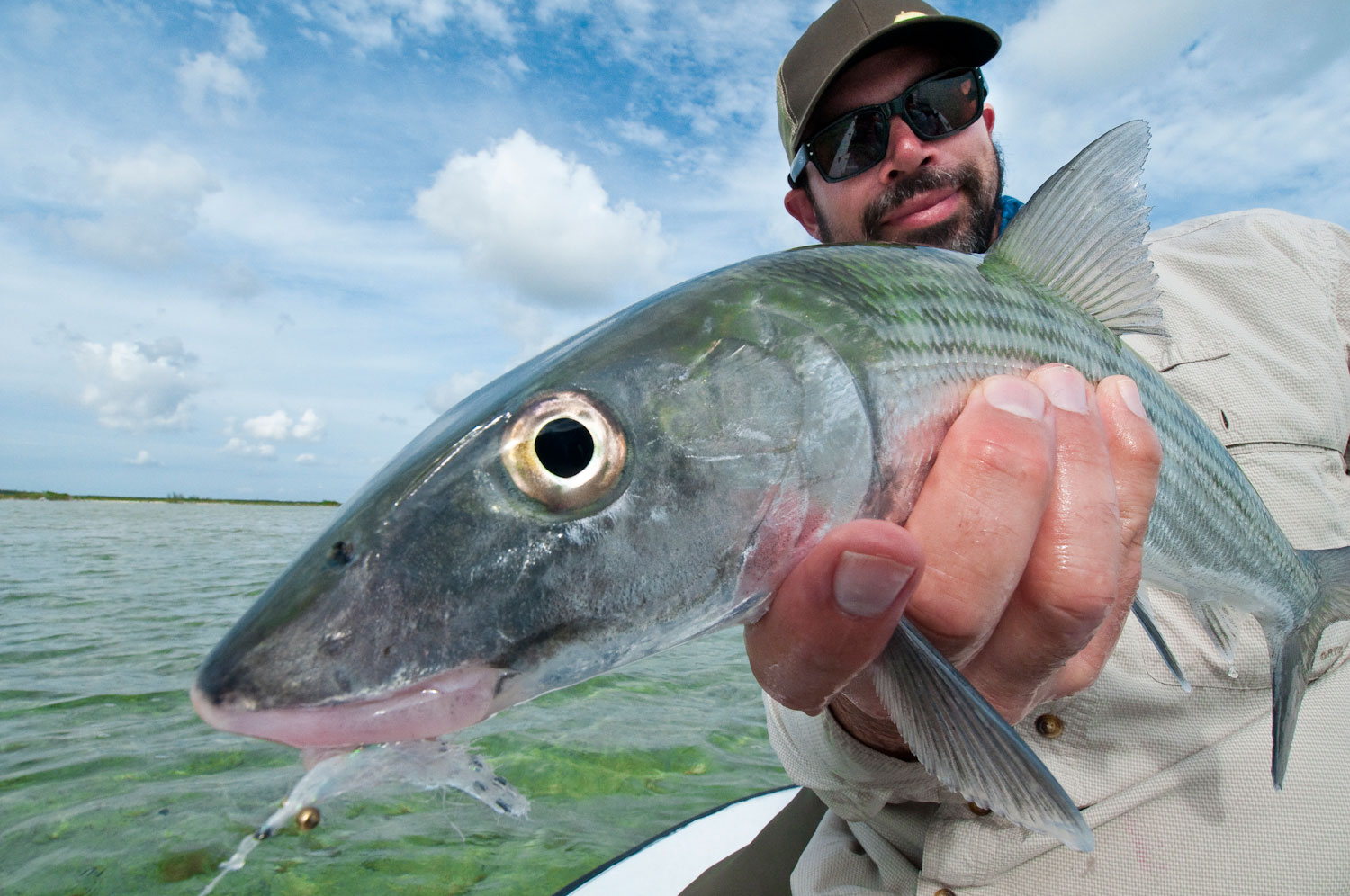
WE ALL KNOW THE HEARTBREAK OF SEEING A BIG FISH SPOOK AND RUN WHEN WE MAKE A CAST.
Whether its due to a poor presentation, the fish catching sight of us or something completely random and out of our control doesn’t matter. The pain is the same and it’s our natural reaction to consider that fish done and watch him swim away. For most species that’s the case, certainly for a wary trout but the bonefish is another subject.
Many times I’ve seen a bonefish spook and run or refuse a fly and turn away only to eat that same fly on the next cast. Maybe it sees the fly in a different light or from another angle that makes it more appealing or maybe it’s mood changes that quickly, I don’t know but it happens. What I do know is that as long as that fish is in range I will continue to show it that fly.
Read More »The Only Two Caddis Pupa Patterns I Really Need to Carry
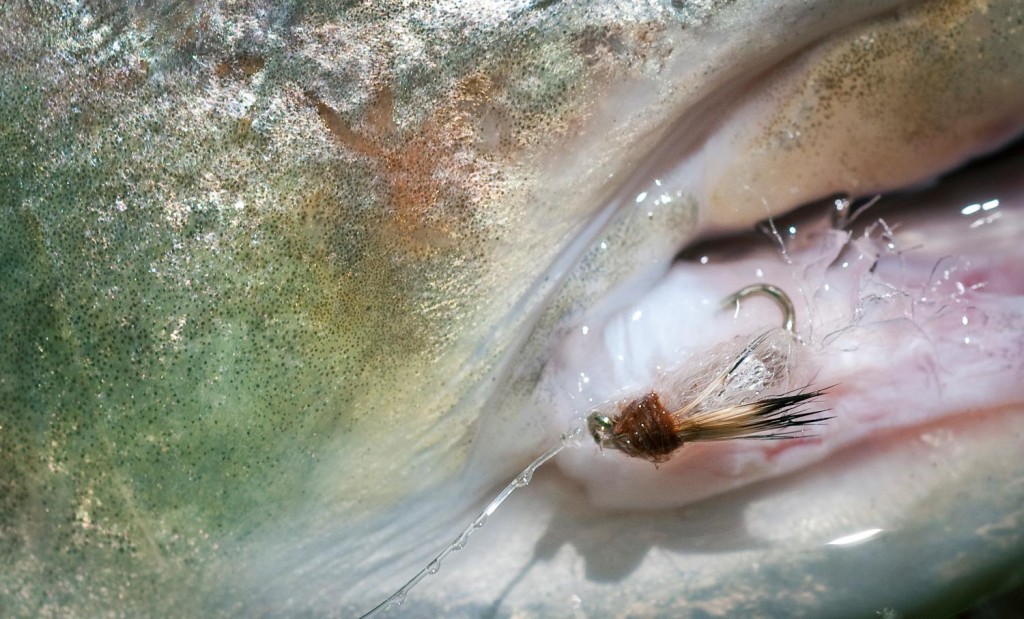
Caddisflies, who doesn’t love them? I can assure you trout sure do.
Tying a caddisfly imitation on, is usually not a bad move on any trout water you visit. Globally, there’s thousands of different species of caddisflies, and that fact alone, one could argue caddisflies are the most abundant and popular aquatic insects found in trout water. If I remember correctly, my first trout landed on a dry fly was with an Elk Hair Caddis. That was a long time ago, back when I knew nothing about fishing caddis pupa patterns and how important they were. I’ve since, with the help of the great Gary LaFontaine, author of the famous book, “Caddisflies”, deepened my knowledge of this aquatic insect, and I’ve built a whole new appreciation and respect for the importance they have in a trout’s diet. Year-round, but particularly during the spring, early summer and fall, fly anglers should be well stocked up on caddisfly pupa fly patterns.
It’s safe to say the most effective way to catch the trout during a caddisfly hatch is to fish caddis pupa imitations. I’ve got many different caddisfly pupa patterns in my fly box, but over the years, LaFontaine’s deep sparkle pupa and emergent sparkle pupa have caught me more fish than all the other pupa patterns combined. These patterns should be in every trout anglers fly box. Gary LaFontaine did an excellent job of researching and studying the characteristics, underwater look and behavior of emerging caddis pupa. He used aquariums with living caddisfly specimens, and spent countless hours scuba diving on rivers during caddisfly hatches to gain accurate insight of what the trout see during a caddisfly hatch. He then took the research and data he collected and hand picked fly tying materials that he could use to design and tie accurate caddisfly patterns for each life-stage of the aquatic insect. This was an astonishing feat that took Gary LaFonataine twenty years to compile and complete. We all owe him a great deal of gratitude and thanks for all his hard work. Without his contributions who knows where we’d be today in understanding
Read More »